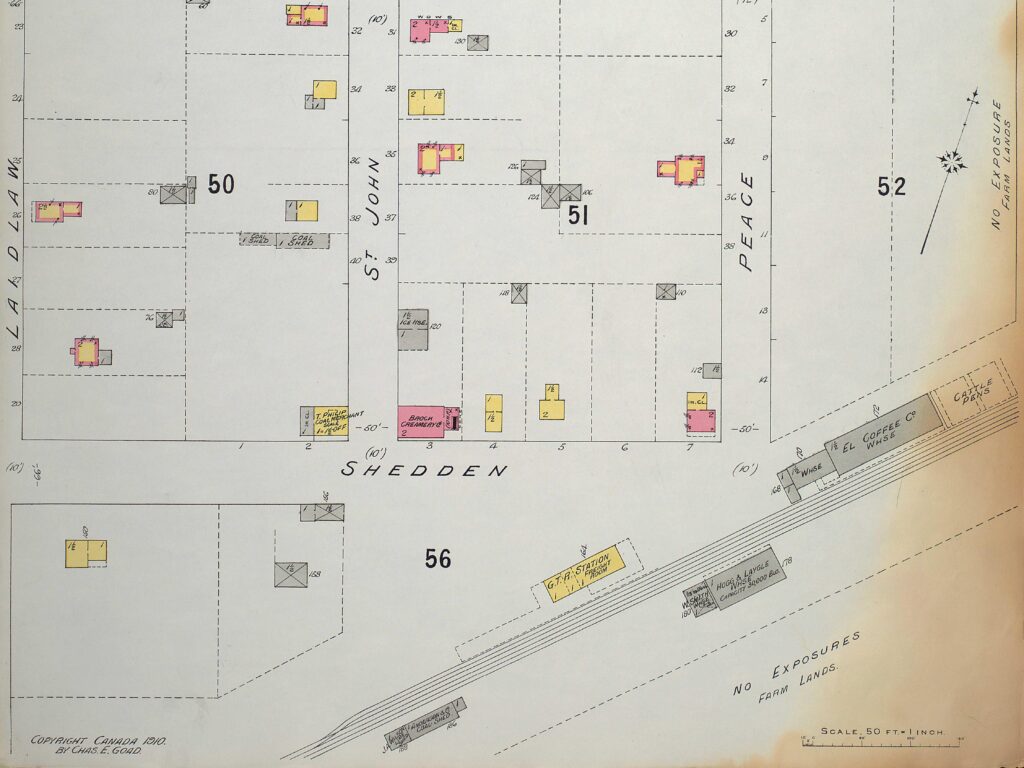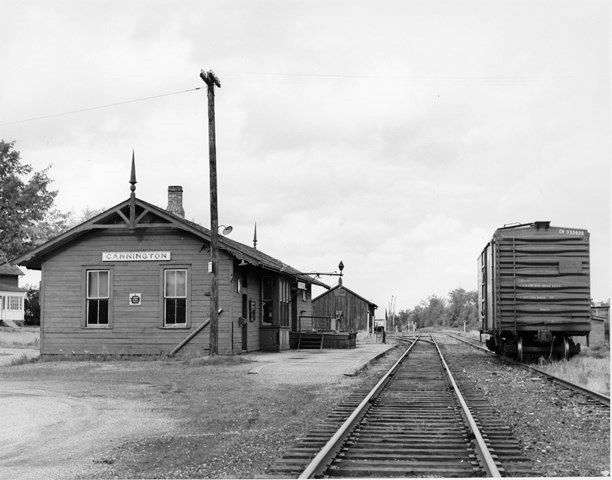Note: This is not to be confused with the restored railway station at the Cannington Community Centre which, despite having signs that read “Cannington”, originally came from Mount Albert.
Summary
Cannington Station was built at the foot of Peace Street by the narrow-gauge Toronto & Nipissing Railway in 1872 while its construction was progressing northward to Coboconk. It was a small rectangular structure made primarily from wood, having a simple pitched roof with ornate spires at each end. The first train arrived at Cannington Station on November 26th, 1872. Shedden Street and Laidlaw Street nearby were named after the railway’s president and one of its promoters respectively, John Shedden and George Laidlaw. Cannington Station became the site of a major tragedy in the Toronto & Nipissing Railway’s history when on May 16th, 1873, John Shedden was crushed to death between moving train cars and the station platform.
Narrow gauge soon fell out of favour in Canada and the financially burdened Toronto & Nipissing sought to merge with the nearby Midland Railway of Canada. As negotiations were ongoing in 1881, the Midland Railway financed the completion of a third rail to support standard gauge trains along the southern part of the Toronto & Nipissing. It was officially merged into the Midland Railway on April 1st, 1882, along with several other struggling branch lines. Just two years later on January 1st, 1884, the Midland Railway was leased by the much larger Grand Trunk Railway who would ultimately gain full control of it. Rail traffic through Cannington never grew substantially and by 1886 the station saw just two departures per day, increasing to four by the turn of the 20th century.
Around 1900, the station was slightly modified by the Grand Trunk who added an operator’s bay for increased visibility from the station agent’s office. The Grand Trunk would encounter financial difficulties over the next two decades, culminating in its nationalization and subsequent merger into Canadian National in 1923. As automobiles started to appear during the early 20th century, branch line passenger ridership was one of the first things to feel the effects. Several old stagecoach routes in the area were turned into provincial highways in the 1920’s, allowing for a higher amount of car traffic and at faster speeds than before. Service was reduced back to two trains per day by 1958, by which point passenger traffic had already been truncated at Woodville. Cannington Station was closed to passengers in 1961 but remained in use as a train order office for the remaining freight trains that used the line. Unfortunately, the station succumbed to fire in 1968 and was unsalvageable. The railway line through Cannington was finally abandoned in 1986, and part of the right-of-way has since been readapted into the Beaver River Wetland Trail.
Condensed Station Info:
| Location: | Served By: | Current State: | Date Built: | Date Demolished/Burned: |
| Shedden Street | T&N (1872 – 1882) MRC (1882 – 1884) GTR (1884 – 1923) CNR (1923 – 1961) | Burned Down | 1871 | 1968 |



